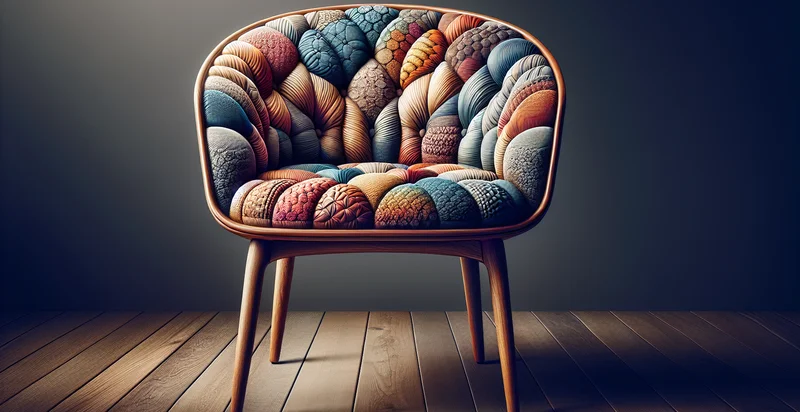Identify what material a chair is made from
using AI
Below is a free classifier to identify what material a chair is made from. Just upload your image, and our AI will predict what material a chair is made from - in just seconds.

Contact us for API access
Or, use Nyckel to build highly-accurate custom classifiers in just minutes. No PhD required.
Get started
import nyckel
credentials = nyckel.Credentials("YOUR_CLIENT_ID", "YOUR_CLIENT_SECRET")
nyckel.invoke("what-material-a-chair-is-made-from", "your_image_url", credentials)
fetch('https://www.nyckel.com/v1/functions/what-material-a-chair-is-made-from/invoke', {
method: 'POST',
headers: {
'Authorization': 'Bearer ' + 'YOUR_BEARER_TOKEN',
'Content-Type': 'application/json',
},
body: JSON.stringify(
{"data": "your_image_url"}
)
})
.then(response => response.json())
.then(data => console.log(data));
curl -X POST \
-H "Content-Type: application/json" \
-H "Authorization: Bearer YOUR_BEARER_TOKEN" \
-d '{"data": "your_image_url"}' \
https://www.nyckel.com/v1/functions/what-material-a-chair-is-made-from/invoke
How this classifier works
To start, upload your image. Our AI tool will then predict what material a chair is made from.
This pretrained image model uses a Nyckel-created dataset and has 25 labels, including Acrylic, Bamboo, Carbon Fiber, Ceramic, Composite, Concrete, Cork, Fabric, Fiberglass and Foam.
We'll also show a confidence score (the higher the number, the more confident the AI model is around what material a chair is made from).
Whether you're just curious or building what material a chair is made from detection into your application, we hope our classifier proves helpful.
Related Classifiers
Need to identify what material a chair is made from at scale?
Get API or Zapier access to this classifier for free. It's perfect for:
- Furniture Retail Inventory Management: Retailers can utilize the material classification function to efficiently categorize and manage their inventory of chairs. By accurately identifying the material composition, retailers can optimize their supply chains and ensure that customers receive detailed product information.
- Sustainability Compliance: Businesses focused on sustainable practices can employ this function to verify the materials used in their chair products. This ensures compliance with regulations and helps in promoting eco-friendly furniture options, thereby enhancing brand reputation.
- Insurance Claim Assessment: Insurance companies can implement this function during claims processing for damaged furniture. By quickly identifying the material of the chair, they can expedite claims and assess replacement costs more accurately.
- E-commerce Product Descriptions: E-commerce platforms can integrate this function to automatically populate product descriptions with material details for chairs. This enhances customer trust and transparency while reducing the effort involved in content creation.
- Quality Control in Manufacturing: Manufacturers can leverage this classification function within their quality control processes to ensure that the correct materials are used in production. This minimizes waste and reduces the likelihood of costly errors in material selection.
- Interior Design Solutions: Interior designers can use this function to quickly identify chair materials when selecting furniture for clients. This information aids in recommending complementary materials and ensuring design coherence throughout a project.
- Market Research and Trends Analysis: Market researchers can analyze the data generated by the material classification function to identify trends in consumer preferences for chair materials. This insight can guide product development and marketing strategies, targeting specific customer segments more effectively.


